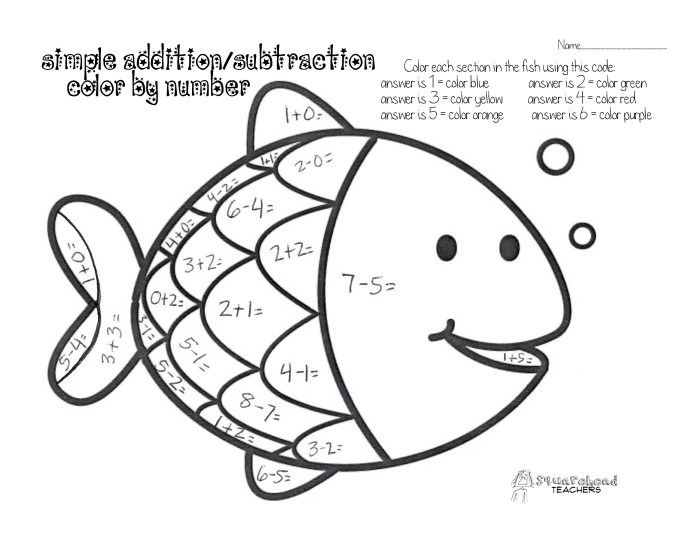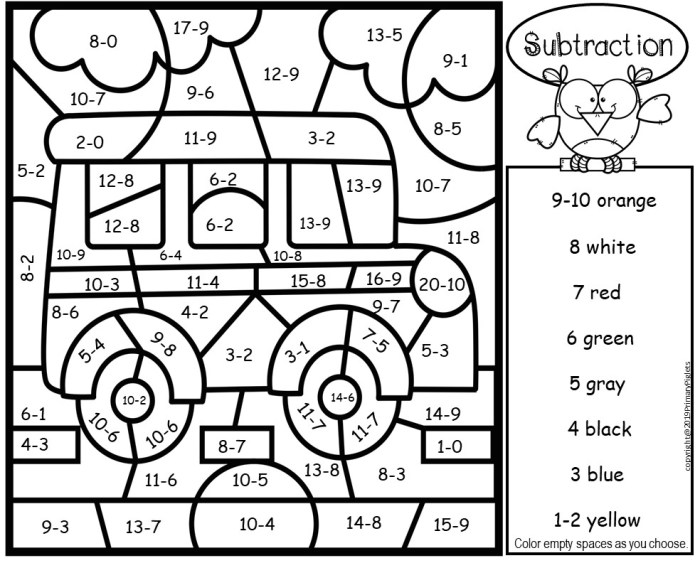Color by addition and subtraction unveils the captivating realm of color theory, where hues dance and blend to create a symphony of visual wonders. This concept, rooted in the interplay of light and pigments, forms the cornerstone of artistic expression and visual communication.
Delving into the depths of color addition and subtraction, we embark on a journey that illuminates the color wheel, uncovers the secrets of blending and mixing, and explores the transformative power of color in diverse mediums and fields.
Introduction to Color by Addition and Subtraction

Color by addition and subtraction is a fundamental concept in art and design that involves manipulating colors to create new shades and tones. In this article, we will explore the principles of color addition and subtraction, their applications, and advanced techniques for achieving visually appealing effects.
The color wheel, a circular diagram representing the relationships between colors, plays a crucial role in understanding color addition and subtraction. The primary colors (red, yellow, and blue) are positioned at equidistant points on the wheel, with secondary colors (green, orange, and purple) created by mixing adjacent primary colors.
Tertiary colors are formed by combining a primary and secondary color.
Methods of Color Addition and Subtraction
Color addition refers to mixing colors to create a new color. This can be achieved through various methods, such as:
- Mixing Pigments:Combining physical pigments, such as in paint or ink, to create a new color.
- Mixing Light:Overlapping different colored lights, as in additive color mixing used in digital displays.
- Subtractive Color Mixing:Using filters or dyes to absorb certain wavelengths of light, creating the illusion of color addition.
Color subtraction, on the other hand, involves removing or neutralizing colors to create a new shade. This can be achieved by:
- Adding White:Mixing a color with white to create a lighter shade or tint.
- Adding Black:Mixing a color with black to create a darker shade or tone.
- Mixing Complementary Colors:Combining colors that are opposite each other on the color wheel, which neutralizes the color and creates a gray or neutral shade.
Applications of Color Addition and Subtraction, Color by addition and subtraction
Color addition and subtraction have widespread applications in various fields:
- Painting and Drawing:Artists use color addition and subtraction to create a wide range of colors and shades.
- Digital Art:Computer-based art programs use additive color mixing to create digital images.
- Photography:Color subtraction is used in color filters to adjust the color balance of photographs.
- Design:Color addition and subtraction are essential in creating color schemes for websites, logos, and other design elements.
- Fashion:Designers use color addition and subtraction to create color combinations for clothing and accessories.
- Architecture:Color addition and subtraction are used to create visually appealing exteriors and interiors of buildings.
Advanced Techniques for Color Addition and Subtraction
Beyond basic methods, there are advanced techniques for color addition and subtraction that allow for greater control and complexity:
- Color Blending:Gradually transitioning between colors to create smooth gradients.
- Color Glazing:Applying transparent layers of color over one another to create depth and richness.
- Color Theory:Understanding the relationships between colors and using them to create harmonious and visually appealing combinations.
Design Considerations for Color Addition and Subtraction
When using color addition and subtraction, it is important to consider:
- Color Harmony:Creating visually pleasing combinations by considering the relationships between colors on the color wheel.
- Color Balance:Distributing colors evenly to create a balanced and aesthetically appealing design.
- Color Contrast:Using contrasting colors to create visual interest and draw attention to specific elements.
Q&A: Color By Addition And Subtraction
What is the difference between color addition and subtraction?
Color addition involves mixing pigments or light to create new colors, while color subtraction removes pigments or filters light to achieve desired hues.
How does the color wheel relate to color addition and subtraction?
The color wheel provides a visual representation of the relationships between colors, aiding in understanding how they interact when added or subtracted.
What are some examples of color addition and subtraction in different mediums?
In painting, color addition occurs when mixing pigments, while in photography, color subtraction happens when using filters or adjusting exposure.
